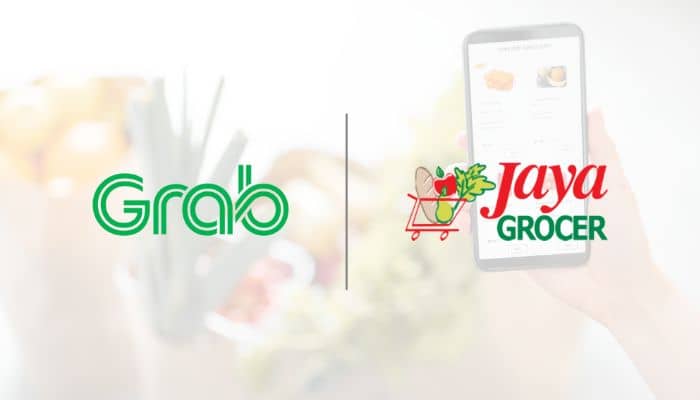In the industry’s continued quest to find new channels to deliver effective campaigns to consumers, retail media networks (RMNs) have proven to be able to cut through the noise and able to stand out to consumers and deliver results. This is especially evident with the continued popularity of RMNs for marketers in Southeast Asia, with the latest report from GrabAds and Kantar noting that advertising spend on RMNs in the region is forecast to grow US$4.b by 2030.
The report also highlighted the importance of superapps in boosting RMN ad spend amongst SEA marketers, stating that superapp RMNs are well-positioned to serve the consumer needs with their O2O full-funnel ecosystem powered by first-party data.
To better understand how RMNs became a popular advertising platform for marketers in the region–and how brands and advertisers should approach them–MARKETECH APAC recently spoke exclusively to Ken Mandel, regional managing director and head of GrabAds and brand insights at Grab to learn more about the benefits of RMNs for advertisers and what case studies should the industry note in terms of RMN application.
Understanding regional factors that amplified RMNs
For Mandel, while retail media networks (RMNs) development differ from one region to another, he noted that Southeast Asia’s fast-growing digital economy and increasingly tech-savvy population primed for speed and convenience have made the region a fertile ground for the rapid growth of retail media networks (RMNs).
This is then highlighted by their recent study alongside Kantar that noted the total advertising (ad) spend on RMNs in Southeast Asia is projected to grow by 8% year-on-year in 2024, with year-on-year growth forecasted to be higher or consistent with global growth figures till 2030.
“Such market nuances are shaped by consumer preferences and behaviour. For instance, our study shows that 2 out of 3 Southeast Asians surveyed prioritise having products and services on-demand. This suggests that consumers in the region demand seamless, convenient experiences that get desired products into their hands quickly,” he stated.
He also noted how superapps much like Grab have also emerged as an integral aspect of consumers’ daily lives, and are able to seamlessly bridge the entire retail experience from discovery to purchase and delivery.
“One in two Southeast Asians utilises superapps for their everyday online and offline activities, according to our study with Kantar. The integrated RMN ecosystem with its multiple services allows RMNs to collect first-party transaction data across the platform beyond simply purchasing habits, providing holistic user understanding for brands to build more effective targeting parameters,” Mandel added.
How RMNs are delivering effective advertising campaigns
To begin with, Mandel notes that RMNs allow brands and advertisers to benefit from a full-funnel sales flywheel that achieves both top and bottom-funnel objectives. For him, they are powered by first-party transaction data and solution-oriented ads, allowing advertisers to serve highly relevant ads to customers that meet their needs and behaviour across their buying journey.
“Essentially, RMN ads reach consumers who are already in a buying or discovery mindset and provide a suitable product solution for the right occasion. As a result, consumers are more receptive towards RMN ads, as they are perceived as less intrusive and more trustworthy,” he explained.
It is also worth noting that in the same study they conducted alongside Kantar, it noted that RMNs ranked first in online media channel equity, which measures consumers’ receptivity to advertising messages across different online media channels.
“RMNs are able to deliver strong performance marketing results, thanks to three key ingredients – first-party data, a sizable audience and the ability to close the loop between consumer intent and purchase. This means that advertisers can attribute sales to their media dollars,” he also stated.
Mandel also highlighted how superapp RMNs in particular can reach and measure both offline and online behaviours and transactions, thanks to their unique online-to-offline ecosystems.
For instance, on Grab’s case, they were able to work with juice brand Sunquick to serve ad banners offering a free sample of Sunquick’s new Mango cordial. Through this campaign, clicking into the ads would take shoppers to GrabMart where everyone who bought an item would have a bottle of Sunquick Mango cordial added to their basket. Moreover, they have also worked with DBS when they curated an omnichannel campaign with offline fleet ads and in-transit online ads on the Grab app.
“Superapp RMNs are not just pure performance marketing channels. According to the latest Grab Food and Delivery Trends 2023 report, 66% of our consumers come to Grab without a specific store in mind, and 91% of them have used the Grab app to discover new restaurants or stores. This means that consumers also leverage RMNs for discovery, which opens up opportunities for upper-funnel brand building,” he said.
Understanding how superapp RMNs are supporting contextual advertising
Speaking of superapps, Mandel notes that the integrated RMN ecosystem with its multiple services on superapps allows RMNs to collect first-party transaction data across the platform beyond simply purchasing habits, providing holistic user understanding for brands to build more effective targeting parameters.
Moreover, it is also worth mentioning that the superapp’s integrated payment systems also make it possible to track offline transactions if users pay using the platform, allowing brands to better attribute sales to advertising dollars.
“Superapp RMNs like Grab bridge the online to offline with their comprehensive ecosystem. GrabAds offers advertisers offline assets such as product sampling, in-car branding or car wraps to deliver an integrated campaign across multiple channels. This is key to designing more effective ad campaigns as our report with Kantar reveals that using both online and offline channels improves positive ad receptivity by 5%,” he explained.
He also added how superapps are able to provide first-party transaction data, which reflects the true commercial intention of a consumer. For them, this helps brands and advertisers identify consumer personas and audience segments based on actual behaviour and transactions.
In their own case, they have identified so-called ‘Chief Family Officers; (CFOs) as a specific, high-value segment of their users on the Grab platform based on indicative purchasing behaviour. According to Mandel, their behaviour within their app offers many opportunities for advertisers to do so, since they spend 2.1 times more monthly and use delivery services 1.9 times more frequently than the average Grab user.
“Advertisers looking to reach CFOs can consider promoting family-related products catering to their needs. Ultimately, high-resolution user profiling with superapp RMNs allows brands to create more targeted campaigns that resonate with specific user segments,” he said.
Advice for advertisers tapping RMNs for the first time
“if you’re not in the game, you can’t play”: this was the number one advice Mandel offered to brands if they want to explore RMNs for the first time. For him, whilst RMNs provide a lucrative opportunity for advertisers to expand their reach, one should also know their perfect RMN match.
“It is also important to partner with the right RMN players. While there are diverse retail media platforms in Southeast Asia, advertisers should look out for three key ingredients when deciding which platform to work with: first-party data, a sizable audience and the ability to ‘close the loop’,” he said.
Mandel also added, “Most importantly, brands should not focus only on bottom-funnel opportunities. RMNs are full-funnel solutions, and advertisers should consider how they can utilise the capabilities of RMNs across the funnel with the consumer in the middle.”
With RMNs continuing to be a promising advertising platform for marketers in Southeast Asia, it’s also important to understand that tapping into this new type of platform requires both an understanding of how your brand would be relevant to users, especially those who are using superapps on a regular basis. With consumer behaviour being more manifested on online platforms, RMNs–whether on social media or on e-commerce platforms–is a great opportunity for advertisers to ride on whilst understanding better consumers on a contextual basis.



















